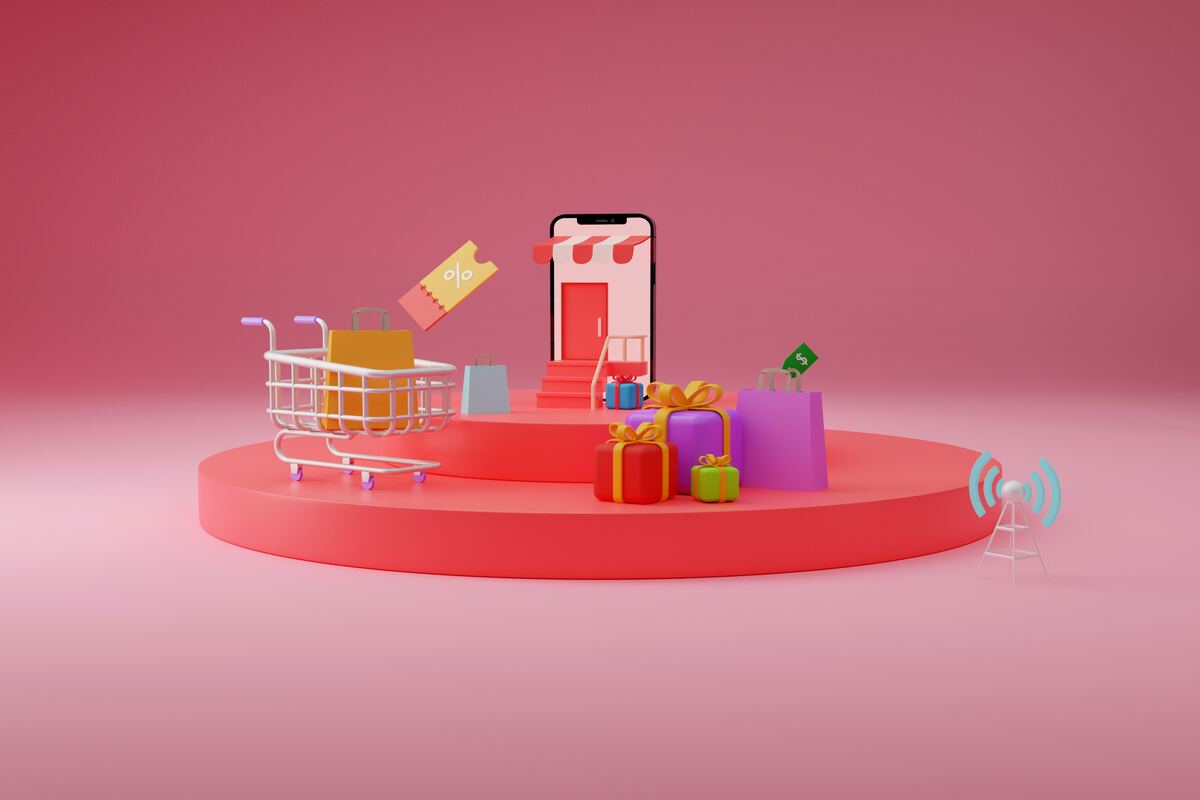I. Introduction
In today’s digital age, the e-commerce landscape is buzzing with innovative business models, and Shopify dropshipping stands out as a trailblazer. This model, which eliminates the need for inventory storage, has redefined online commerce. Entrepreneurs can now bypass traditional hurdles, focusing solely on reaching and converting their target audience. And the secret weapon in their arsenal? Social media advertising.
Platforms like Facebook, Instagram, and Twitter have transformed from mere socializing tools to powerful marketing platforms. For Shopify dropshipping businesses, these platforms offer a golden opportunity to showcase products to a global audience. But it’s not just about visibility. It’s about creating meaningful interactions, building trust, and guiding potential customers through their purchasing journey.
However, diving into social media advertising without a strategy is like sailing without a compass. It’s crucial to understand the nuances of each platform, the preferences of your target audience, and the latest trends in digital advertising. By mastering these elements, businesses can harness the full potential of social media advertising, driving increased sales and fostering brand loyalty.

II. Understanding Shopify Dropshipping
A. What is Shopify Dropshipping?
Shopify dropshipping is a retail model where the seller doesn’t hold inventory. Instead, they purchase products from a third party, typically a wholesaler or manufacturer, and have them shipped directly to the customer. This allows sellers to operate an e-commerce store without handling physical inventory or fulfillment.
In the dropshipping process, the relationship between a customer-facing store and a supplier is crucial. There are two common approaches to adopting a dropshipping business model. The first is to seek out one or more wholesale suppliers located in North America (or anywhere else in the world) on your own using a supplier database. Examples of popular online supplier databases include AliExpress, SaleHoo, and Worldwide Brands.
The second approach is to use an app that connects you and your store to thousands of suppliers. For this, you can use DSers, a Shopify app that helps independent business owners find products to sell. With DSers, you can browse AliExpress and import the products that pique your interest directly to DSers—which is connected to your Shopify store—with the click of a button.
B. Benefits of Shopify Dropshipping
One of the biggest advantages of Shopify dropshipping is that it’s possible to launch an e-commerce store without having to invest thousands of dollars in inventory. Traditionally, a brick-and-mortar or e-commerce retailer has to tie up huge amounts of capital purchasing inventory. With the dropshipping model, you don’t have to purchase a product unless you’ve already made the sale and have been paid by the customer.
Running an e-commerce business is much easier when you don’t have to deal with physical products. With dropshipping, you don’t have to worry about managing or paying for a warehouse, packing and shipping your orders, tracking inventory for accounting reasons, handling returns and inbound shipments, or continually ordering products and managing stock level.
Another benefit of Shopify dropshipping is the flexibility it offers. A successful business can be run from just about anywhere with an internet connection. As long as you can communicate with suppliers and provide timely service and support that meets customer expectations, you can run and manage your business.
C. Spocket for Finding and Managing Dropshipping Suppliers
Spocket is a platform that allows you to easily start dropshipping top products from US and EU suppliers. It enables you to choose the best products to sell from thousands of dropshipping suppliers all over the world.
One of the key features of Spocket is the ability to order product samples right from the dashboard in a few clicks. This allows you to easily test out the products and suppliers to build a reliable dropshipping business.
Spocket can easily sync with your online store, and all orders automatically appear in your app. It is integrated with Shopify, BigCommerce, Wix, and WooCommerce. This makes the process of fulfilling your orders with one click possible.
With 80% of Spocket’s dropshipping suppliers based in the US or Europe, shipping is quick, reliable, and effortless. This ensures that your customers receive their orders in a timely manner, enhancing their shopping experience and increasing the likelihood of repeat purchases.

III. The Role of Social Media in E-commerce
A. Influence of Social Media on Online Shopping
Social media has become a powerful tool that significantly influences consumer buying decisions. It has evolved from a platform for interaction and photo sharing to a vital element in the e-commerce industry, shaping the way we shop online1. Social media platforms have transformed online shopping into a more interactive and convenient experience for consumers.
Instead of clicking on ads and being redirected to a separate website, users can now purchase products without leaving the social media app or website. This seamless integration of shopping into social media platforms has revolutionized the e-commerce industry, making online shopping more engaging and interactive.
Moreover, social media platforms collect data about their users’ interests, preferences, and behaviors. They use this information to deliver personalized ads and targeted advertising. As a result, users see ads that are relevant to their interests, making their shopping experience more tailored and convenient.
B. Different Social Media Platforms and Their Impact
Different social media platforms have varying impacts on online shopping. For instance, brands can create shoppable posts on platforms like Instagram and Facebook, where they tag their products and provide direct links to purchase. Users can click on these tags and complete their purchase within the social media platform itself, eliminating the need to search for products on separate websites and simplifying the buying process.
Influencers play a significant role in social commerce. They are individuals with a sizable social media following and have the power to influence the purchasing choices of their followers. Brands collaborate with influencers to promote their products, and users trust their recommendations. Influencers provide engaging content, share their experiences with the products, and provide unique discount codes or links for their followers to make a purchase.
Furthermore, some platforms use augmented reality (AR) and virtual reality (VR) technologies, allowing users to try on products virtually or see how they would look in their homes before making a purchase. These features can be easily experienced when buying home decors & furniture from platforms like Amazon.
C. Tailwind for Managing and Optimizing Social Media Content
Tailwind is a social media management tool that makes social media and email marketing easy. It features a generative AI copywriter, Pinterest and Instagram scheduling, aesthetic templates, SmartScheduler, and more.
Tailwind offers a personalized marketing plan for email and social media, providing post ideas and real-world examples to guide users through content creation. It incorporates proven best practices to ensure impactful marketing.
Moreover, Tailwind introduces features like Ghostwriter and Create that work together to generate marketing content. Ghostwriter instantly creates the copy needed, eliminating the struggle to find the right words. On the other hand, Tailwind Create applies your colors, fonts, and logo to every design to give you a completely unique set of on-brand posts sized for each network and ready to share.

IV. Developing a Social Media Advertising Strategy for Your Shopify Store
A. Identifying your target audience
The first step in developing a successful social media advertising strategy for your Shopify store is identifying your target audience. This is a crucial step because your target audience will determine the type of content you create, the tone of your messaging, and which social media platforms you should focus on. Understanding your audience’s demographics, interests, and online behavior can help you create content that resonates with them and encourages engagement.
To identify your target audience, start by analyzing your current customer base. Look at who is buying your products and try to find common characteristics and interests. This can give you a good idea of who is interested in your products and who you should be targeting with your social media advertising.
Additionally, consider who your products are intended for. For example, if you’re selling eco-friendly products, your target audience might be individuals who are environmentally conscious. Understanding who your products are designed for can help you reach the right people with your social media advertising.
B. Choosing the right social media platforms
Once you’ve identified your target audience, the next step is to choose the right social media platforms for your advertising efforts. Not all social media platforms are created equal, and different platforms attract different types of audiences. For example, if your target audience is younger, platforms like Instagram and TikTok might be a good fit. On the other hand, if your target audience is professionals, LinkedIn might be a better choice.
It’s also important to consider where your audience is most active and engaged. You can do this by researching the demographics of different social media platforms and comparing them to your target audience. Additionally, consider where your competitors are advertising and where they are seeing the most engagement.
Remember, it’s not about being on every platform; it’s about being on the right platforms. It’s better to focus your efforts on a few platforms where your audience is most active and engaged than to spread yourself too thin across too many platforms.
C. KWFinder for researching keywords and understanding your audience’s needs
KWFinder is a powerful tool that can help you understand your audience’s needs and interests. It allows you to find long-tail keywords with low SEO difficulty, making it easier for your content to rank on search engines. This tool is particularly useful for finding keywords that your target audience is searching for, which can help you create content that meets their needs and interests.
One of the key features of KWFinder is its ability to provide exact search volumes and the most accurate keyword difficulty. This means you can find keywords that are not only relevant to your audience but also have a high search volume and low competition. This can increase the chances of your content being found by your target audience.
Additionally, KWFinder allows you to see what keywords your competitors rank for. This can give you insight into what your audience is interested in and what kind of content they are engaging with. By understanding what works for your competitors, you can create a more effective social media advertising strategy for your Shopify store.

V. Best Practices for Social Media Advertising in Dropshipping
A. Creating Engaging Content
Creating engaging content is the cornerstone of any successful social media advertising strategy. It’s not just about promoting your products; it’s about telling a story that resonates with your audience and encourages them to interact with your brand.
Firstly, understand your audience. What are their interests, their pain points, their aspirations? Use this information to create content that speaks directly to them. For example, if you’re selling fitness products, create content that motivates your audience to lead a healthier lifestyle, not just posts about the products you sell.
Secondly, make your content visually appealing. Humans are visual creatures, and an eye-catching image or video can make all the difference in whether someone stops scrolling to look at your post. Use high-quality images, play with colors and fonts, and experiment with different formats like infographics or short videos.
Lastly, don’t forget to add a call-to-action (CTA). Whether it’s asking your audience to visit your website, leave a comment, or share your post, a clear CTA can significantly increase engagement rates.
B. Utilizing User-Generated Content
User-generated content (UGC) is a powerful tool for social media advertising. It’s content created by your customers, such as reviews, testimonials, or photos and videos of your products in use.
UGC is highly effective because it’s authentic and relatable. It shows potential customers that real people are using and loving your products. Plus, it’s a form of social proof, which can significantly influence purchasing decisions.
To encourage UGC, you can create a unique hashtag for your brand and encourage customers to use it when posting about your products. You can also run contests or giveaways that require participants to post about your brand. Remember to always ask for permission before reposting UGC on your own channels.
To learn more about utilizing user generated content, check out our blog post on using user-generated gontent for better digital marketing.
C. Pictory AI for Converting Blog Posts into Engaging Videos
In the age of digital marketing, video content is king. However, creating high-quality videos can be time-consuming and require technical skills. This is where Pictory AI comes in. Pictory AI is a tool that can automatically transform your blog posts into engaging videos.
Pictory AI uses advanced artificial intelligence to extract the key points from your blog posts and convert them into short, shareable videos. It can also add captions to your videos automatically, which is crucial as 85% of social media videos are watched on mute.
Moreover, Pictory AI can create high-conversion Video Sales Letters complete with stock footage, music, and voiceovers in just minutes. This can be a game-changer for your social media advertising strategy, allowing you to create engaging video content quickly and easily.

VI. Measuring the Success of Your Social Media Advertising
A. Importance of Tracking and Analyzing Results
The importance of tracking and analyzing your social media advertising results cannot be overstated. It’s the only way to know if your efforts are paying off and if you’re reaching your goals. Without tracking and analyzing, you’re essentially flying blind, making decisions based on gut feelings rather than hard data.
Tracking your results allows you to see what’s working and what’s not. You can identify which posts get the most engagement, which ads drive the most sales, and which platforms deliver the best ROI. This information is crucial for optimizing your strategy and maximizing your results.
Analyzing your results goes a step further. It involves digging into the data to understand why certain things are working and others aren’t. It allows you to understand your audience better, improve your messaging, and make more informed decisions about your social media advertising strategy.
B. Key Metrics to Monitor
When it comes to social media advertising, there are several key metrics you should be monitoring. These include engagement metrics (likes, comments, shares), reach and impressions, click-through rate (CTR), conversion rate, and ROI.
Engagement metrics tell you how your audience is interacting with your content. A high level of engagement indicates that your content resonates with your audience.
Reach and impressions give you an idea of how many people are seeing your content. While reach tells you how many unique users have seen your content, impressions tell you how many times your content has been displayed.
CTR is the percentage of people who click on your ad after seeing it. It’s a good indicator of how compelling your ad is.
Conversion rate tells you how many people took the desired action (like making a purchase or signing up for a newsletter) after clicking on your ad. And ROI tells you how much return you’re getting for every dollar spent on advertising.
C. MonsterInsights for Tracking and Analyzing Your Social Media Performance
MonsterInsights is a powerful tool for tracking and analyzing your social media performance. It’s the best Google Analytics plugin for WordPress, allowing you to set up Google Analytics for your site with just a few clicks.
With MonsterInsights, you can see useful information about your visitors right inside your WordPress dashboard. You can see which countries your visitors are from, what they are most interested in, which device they are using, and a whole lot more.
Moreover, MonsterInsights offers 1-click tracking integration with popular WordPress plugins and services. This makes it easy to track your social media performance across different platforms and campaigns.

VII. Conclusion
The digital world is dynamic, with trends and algorithms constantly evolving. In such a landscape, Shopify dropshipping businesses must be agile, adapting their strategies to stay ahead of the curve. Social media advertising, when executed effectively, can be the catalyst that propels a business to success. It’s about more than just reaching a vast audience; it’s about engaging them, building trust, and turning them into loyal customers.
For those eager to expand their digital horizons, affiliate marketing offers another lucrative avenue. Our eBook, “How To: Affiliate Marketing (2nd Ed.)” is a comprehensive 255-page guide that demystifies this realm. From understanding the basics to mastering advanced SEO strategies, this guide is a treasure trove of insights. With over 80% of brands leveraging affiliate marketing and contributing to 15% to 30% of all sales1, the potential is undeniable.
Whether you’re venturing into Shopify dropshipping or exploring affiliate marketing, the key is continuous learning. The digital realm offers boundless opportunities, but only to those willing to adapt, innovate, and grow. With the right strategies and resources, like our invaluable eBook, success is not just a possibility; it’s a guarantee.
VIII. Affiliate Disclosure
I truly appreciate your trust in my advice. Some links you’ll see in my posts are affiliate links, but rest assured. My focus is helping you, and I partner only with companies I genuinely believe in and whose tools and resources will truly benefit you. So, if you decide to purchase through my links, I might earn a small commission—at no extra cost. This support helps me continue researching, writing, and sharing more helpful content. Thank you for your understanding and support!
IX. References
- Beveridge, Claire. “What Is User-Generated Content? And Why Is It Important?” Social Media Marketing & Management Dashboard, 13 Jan. 2022, https://blog.hootsuite.com/user-generated-content-ugc/.
- “10 Social Media Best Practices for 2023.” Sprout Social, 2023, www.sproutsocial.com/insights/social-media-best-practices.
- “The 7 Most Important Metrics to Track as an eCommerce Store.” BigCommerce, 2023, www.bigcommerce.com/blog/ecommerce-metrics.
- “The Ultimate Guide to Dropshipping.” Shopify, 2023, www.shopify.com/blog/dropshipping-guide.
- “What is Dropshipping? Learn the Ropes in 10 Minutes.” Shopify, 2023, www.shopify.com/blog/what-is-dropshipping.
- “How to Target the Right Audience in 5 Simple Steps.” Shopify, 2023, www.shopify.com/blog/target-audience.
- “How Social Media Influence 71% Consumer Buying Decisions.” Search Engine Watch, 20 Nov. 2020, www.searchenginewatch.com/2020/11/20/how-social-media-influence-71-consumer-buying-decisions.
- “Finding Brand Success in the Digital World.” Forbes, 25 Aug. 2017, www.forbes.com/sites/forbesagencycouncil/2017/08/25/finding-brand-success-in-the-digital-world/?sh=181459bb626e.
- “The Impact of Social Media Platforms on Online Shopping.” LinkedIn, 2023, www.linkedin.com/pulse/impact-social-media-platforms-online-shopping-harsh-singh.
- “Social Media Marketing: The Ultimate Guide.” Oberlo, 2023, www.oberlo.com/blog/social-media-marketing.
- “Social Media for Business: A Marketer’s Guide.” Hootsuite, 2023, blog.hootsuite.com/social-media-for-business.
- “Social Media Advertising Resources.” Sprout Social, 2023, sproutsocial.com/insights/social-media-advertising-resources.



